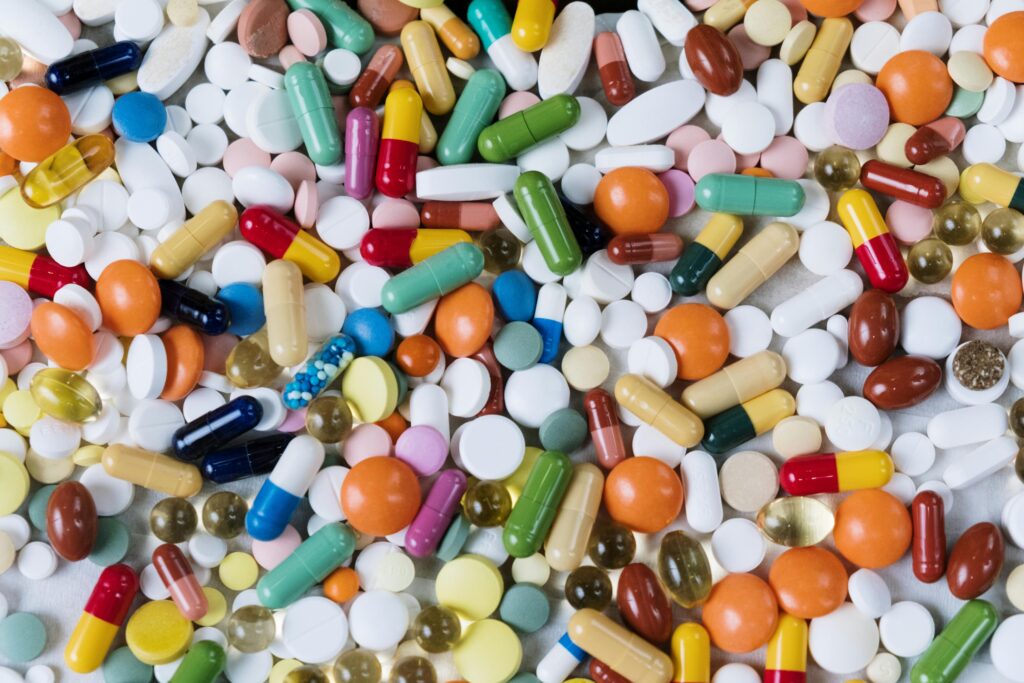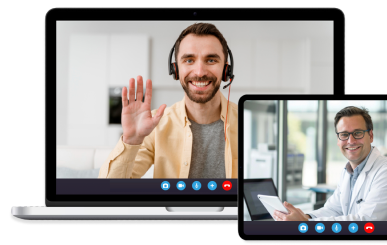For decades, opioid addiction was misunderstood as a moral failing or a lack of willpower. Today, we know better. Opioid use disorder (OUD) is a chronic, relapsing medical condition that changes how the brain functions. And just like diabetes or hypertension, it often requires long-term medical treatment—including the use of carefully selected medications. But what drugs are actually used to treat opioid addiction? How do they work? And how do patients and providers choose the right one? This blog will walk you through the science, uses, and real-world outcomes of the most common medications used in opioid addiction recovery. We’ll cover buprenorphine, methadone, naltrexone, naloxone, and other supporting treatments—breaking down their mechanisms, benefits, side effects, and who they’re best suited for. Whether you’re exploring treatment for yourself, a loved one, or simply want to understand how modern medicine helps people overcome OUD, this guide will give you the insights you need to feel informed and empowered.
Why Medications Matter in Treating Opioid Addiction
Treating opioid addiction without medication is a bit like trying to fight a wildfire with a garden hose. While some people do achieve recovery through behavioral therapy and abstinence alone, research consistently shows that the use of medications dramatically improves outcomes. According to the 2023 Substance Abuse and Mental Health Services Administration (SAMHSA) data, individuals receiving Medication-Assisted Treatment (MAT) are more than twice as likely to remain in recovery compared to those receiving behavioral therapy alone. These medications help stabilize the brain, reduce cravings, prevent withdrawal, and block the euphoric effects of opioids. In short, they provide the foundation upon which lasting recovery can be built.
Buprenorphine: A Modern Marvel for OUD
Buprenorphine is one of the most commonly prescribed and effective medications for opioid addiction. It’s a partial opioid agonist, meaning it activates opioid receptors in the brain—but only partially. This allows it to ease cravings and withdrawal symptoms without producing the intense euphoria or sedation associated with full opioids like heroin or oxycodone. One of the most popular forms of buprenorphine is Suboxone, a combination of buprenorphine and naloxone, which we’ll explore later. Suboxone is typically taken daily via a dissolvable strip or tablet placed under the tongue. Benefits of buprenorphine include:
-
Reduced cravings and withdrawal symptoms
-
Lower overdose risk compared to full agonists
-
Eligibility for at-home use (under medical guidance)
-
Better retention in treatment programs
Side effects can include headache, constipation, nausea, or mild sedation. Still, most patients report that these effects are manageable—and far preferable to uncontrolled opioid use. According to a 2022 study published in The New England Journal of Medicine, patients who received buprenorphine were 45% less likely to relapse compared to those in abstinence-based programs alone.
Methadone: A Proven Option With Powerful Results
Methadone has been used to treat opioid addiction since the 1960s and remains a powerful tool for individuals with severe OUD. Unlike buprenorphine, methadone is a full opioid agonist, meaning it fully activates opioid receptors—but in a slow, controlled way that prevents the high and the crash of illicit opioids. It’s administered through licensed opioid treatment programs (OTPs) and usually taken as a liquid once daily. Methadone is ideal for:
-
Patients with long-term or high-dose opioid dependence
-
People who haven’t succeeded with other medications
-
Individuals needing daily structure and supervision
Methadone does come with more regulation. Patients must visit the clinic daily, at least in the beginning, and the medication must be carefully monitored to avoid misuse or overdose. But the results are compelling: a 2023 Cochrane Review found methadone to be one of the most effective medications for reducing opioid use and retaining patients in treatment.
Naltrexone: Blocking the High
Unlike buprenorphine and methadone, naltrexone is an opioid antagonist—meaning it blocks opioid receptors completely. If someone uses opioids while on naltrexone, they won’t feel any euphoria. This can be incredibly helpful for people who are highly motivated to stay abstinent but vulnerable to relapse. Naltrexone comes in two forms:
-
Oral tablet (taken daily)
-
Extended-release injection (Vivitrol, given monthly)
The main challenge with naltrexone is timing. Patients must fully detox from opioids (typically 7–10 days) before starting it to avoid severe withdrawal. Because of this requirement, naltrexone is often used after initial detox or for people exiting residential treatment. Side effects may include nausea, anxiety, or sleep disturbances. Still, for patients who complete detox and commit to the regimen, naltrexone can be a powerful relapse prevention tool. In fact, a 2023 NIH study found that patients on Vivitrol were 34% less likely to relapse over six months compared to placebo.
Naloxone: Saving Lives, Not Treating Addiction
Naloxone (brand names: Narcan, Kloxxado) is not a treatment for opioid addiction per se—but it plays a crucial role in saving lives during an overdose. Naloxone is an opioid antagonist that rapidly displaces opioids from receptors, reversing the effects of overdose within minutes. It’s typically administered via:
-
Nasal spray
-
Intramuscular injection
Every second counts in an opioid overdose, and naloxone can mean the difference between life and death. The CDC reports that naloxone reversed over 93,000 potential overdoses in 2023 alone. It’s widely available at pharmacies, often without a prescription, and is now carried by first responders, schools, and even family members of at-risk individuals. While naloxone doesn’t treat addiction, its widespread use provides a critical window to connect overdose survivors with long-term care.
Clonidine and Lofexidine: Managing Withdrawal
Withdrawal from opioids can be deeply uncomfortable and distressing—but medications like clonidine and lofexidine can help ease the process. These are alpha-2 adrenergic agonists, originally developed to treat high blood pressure, that reduce symptoms like:
-
Anxiety
-
Sweating
-
Muscle aches
-
Restlessness
They don’t treat cravings or prevent relapse, but they are frequently used in detox centers to help patients complete the first stage of recovery. Lofexidine (Lucemyra) is FDA-approved specifically for opioid withdrawal, while clonidine is commonly used off-label.
Antidepressants and Anti-Anxiety Medications: Treating Co-Occurring Disorders
Many individuals with OUD also suffer from mental health disorders like depression, PTSD, or generalized anxiety. These conditions can both fuel addiction and complicate recovery. In such cases, physicians may prescribe SSRIs, SNRIs, or non-habit-forming anxiety medications to support emotional stabilization. While these medications don’t directly treat opioid dependence, they play an essential role in improving quality of life and reducing relapse risk. As always, they should be used under close supervision and as part of a larger, integrated treatment plan.
How Do Providers Choose the Right Medication?
There’s no one-size-fits-all medication for opioid addiction. The best drug—or combination of drugs—depends on:
-
Severity and duration of opioid use
-
Past treatment history
-
Mental health status
-
Patient preferences
-
Access to providers or clinics
-
Likelihood of adhering to the regimen
For example, a person with long-term heroin use and unstable housing may benefit most from methadone at a structured clinic. A young adult with mild OUD and a strong support system might succeed with Suboxone and outpatient therapy. And someone who’s already completed detox may opt for Vivitrol to avoid relapse. Collaborative decision-making between patients and providers is key. When people feel ownership of their treatment plan, they’re more likely to follow through.
Real-World Example: Hannah’s Recovery Journey
Hannah, a 33-year-old nurse, developed an opioid addiction after being prescribed painkillers for a back injury. Over time, she began using illicit opioids and eventually lost her job. After two overdoses, Hannah entered a MAT program that started her on Suboxone. Within weeks, her cravings were under control, and she was attending weekly therapy. After a year, she transitioned to Vivitrol to help maintain abstinence. Today, she works in addiction recovery and helps others find their way back. Her story is a testament to what happens when evidence-based medication meets compassion and support.
Common Myths About Medication-Assisted Treatment
Despite the science, MAT still faces stigma and misunderstanding. Let’s debunk a few common myths:
-
“It’s just replacing one addiction with another.”
False. MAT medications stabilize brain function—they don’t produce a high. That’s treatment, not substitution. -
“People should just get clean naturally.”
Opioid withdrawal is painful, and relapse is dangerous. MAT gives people a real chance to heal. -
“Only weak people need meds.”
Addiction is a brain disease—not a character flaw. Using medication is smart, not weak.
Understanding these misconceptions can help individuals and families embrace the most effective paths to recovery.
Actionable Takeaways
If you or someone you love is struggling with opioid addiction, here are next steps:
-
Talk to a medical provider who specializes in addiction treatment
-
Ask about buprenorphine, methadone, or naltrexone based on individual needs
-
Get naloxone and learn how to use it—it can save a life
-
Be patient—finding the right medication and dosage can take time
-
Combine meds with therapy for best results
-
Don’t give up after a setback—recovery often includes detours
-
Look into telehealth MAT programs if local access is limited
Treatment works—and the earlier it starts, the better the outcomes.
Conclusion: Medications Change Lives
Opioid addiction is one of the most complex health challenges of our time—but we now have a powerful arsenal of medications to fight back. Whether it’s easing withdrawal, blocking cravings, or preventing overdose, these drugs save lives and build bridges to recovery. No one should have to suffer or go it alone. With the right medication, the right support, and the right timing, recovery isn’t just possible—it’s probable. If you’re ready to start, we’re ready to help.
Renew Health: Your Partner in Opioid Addiction Care
Phone: 575‑363‑HELP (4357)
Website: www.renewhealth.com


